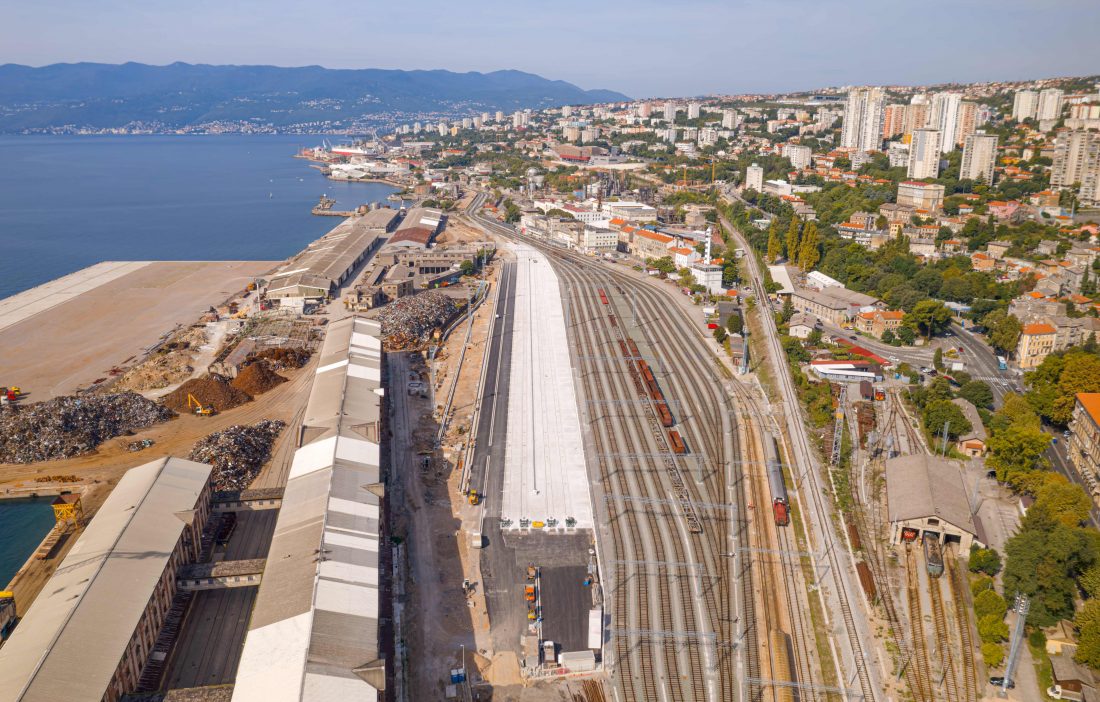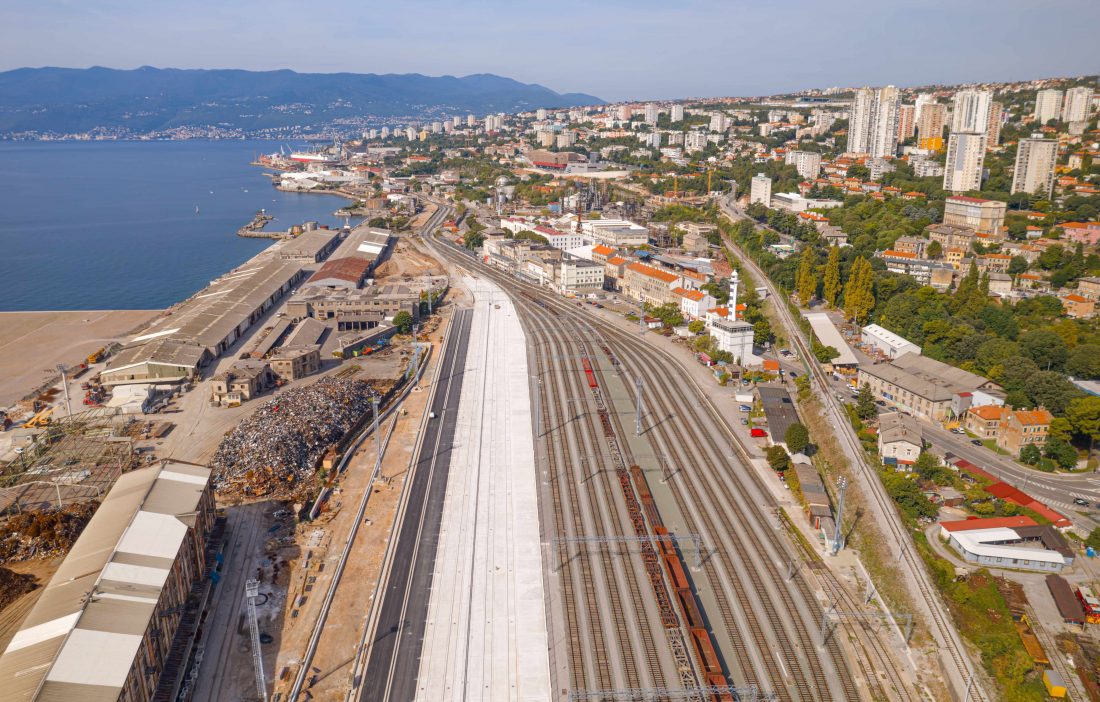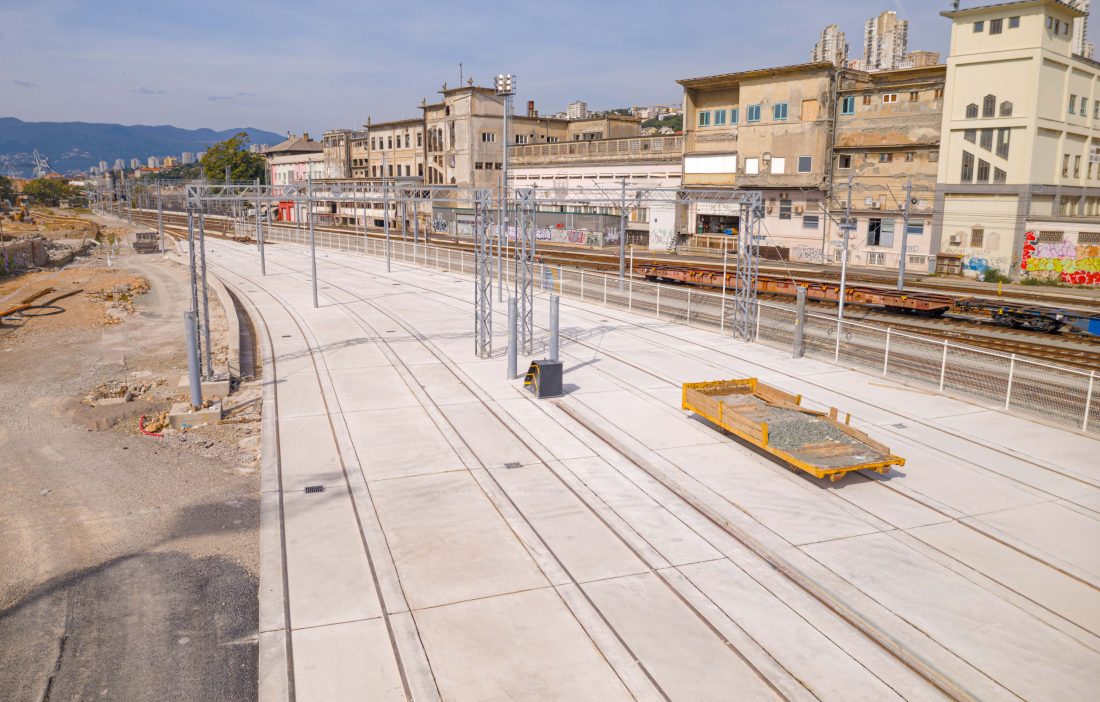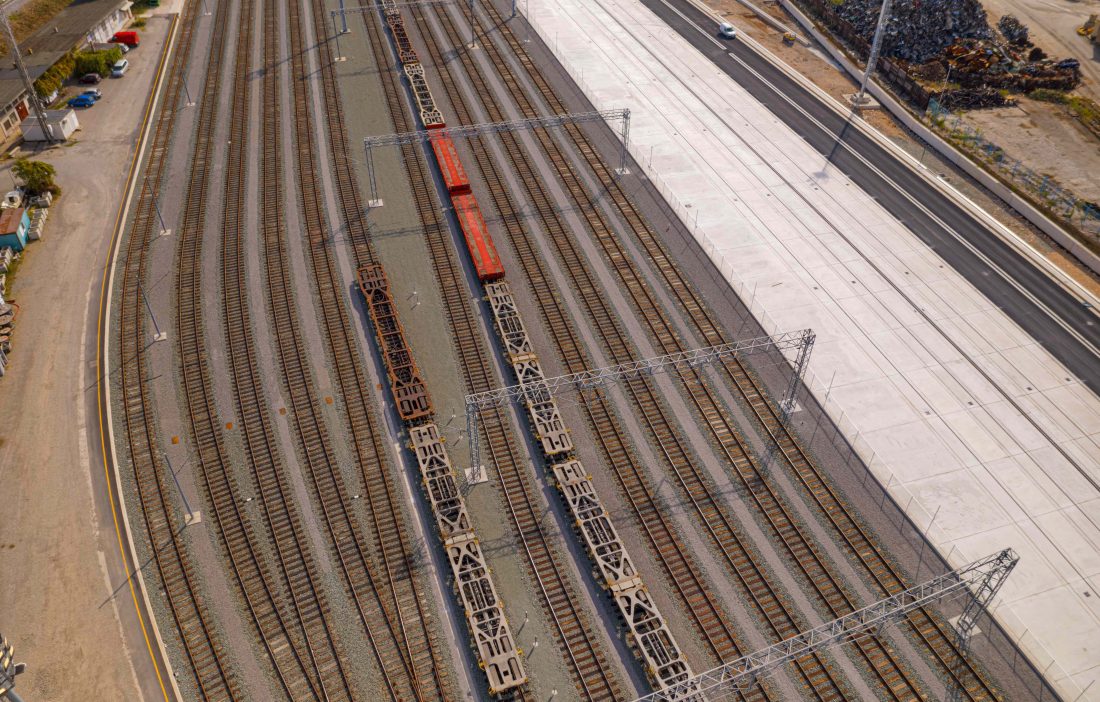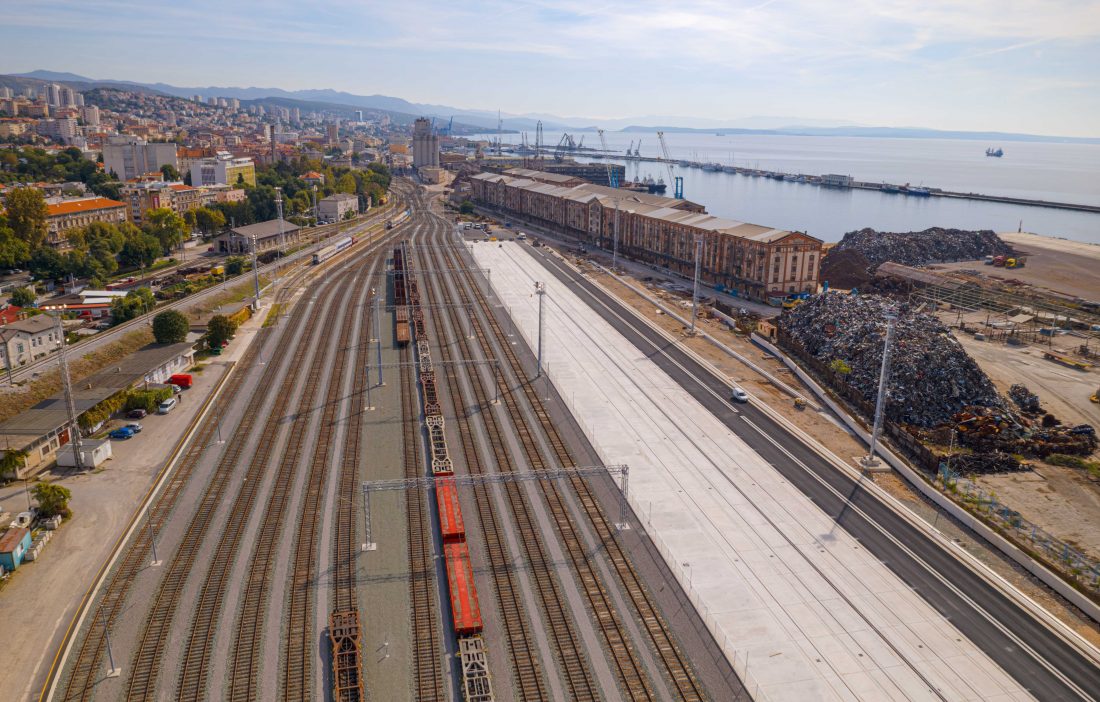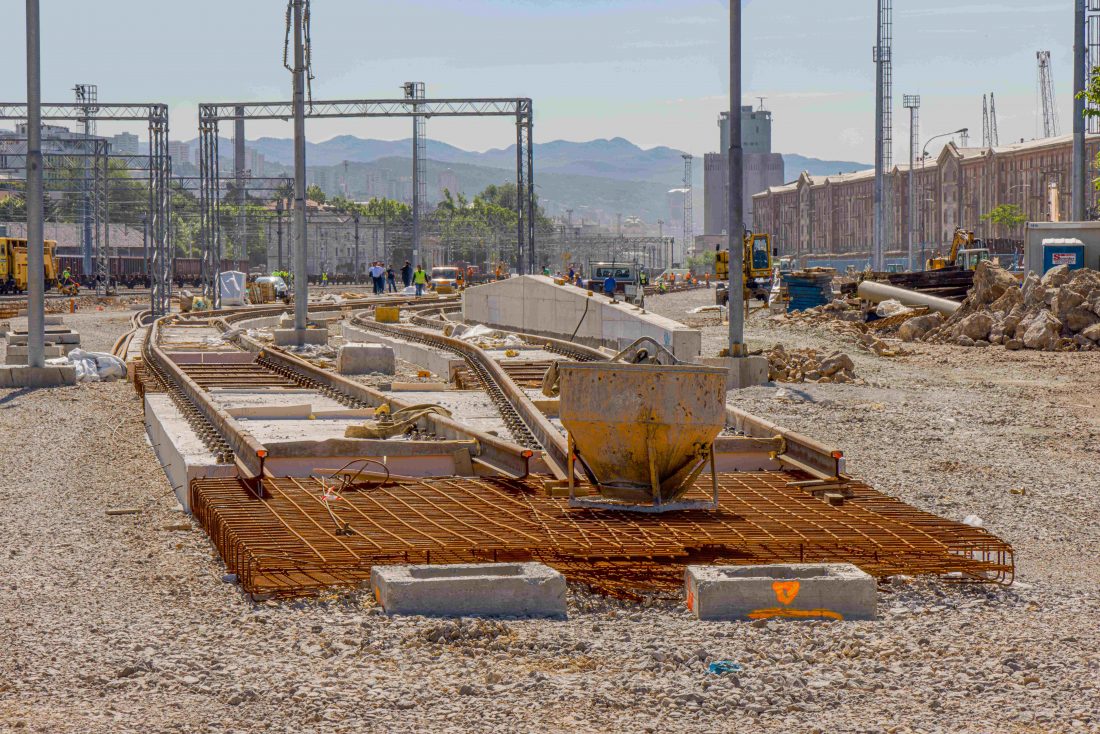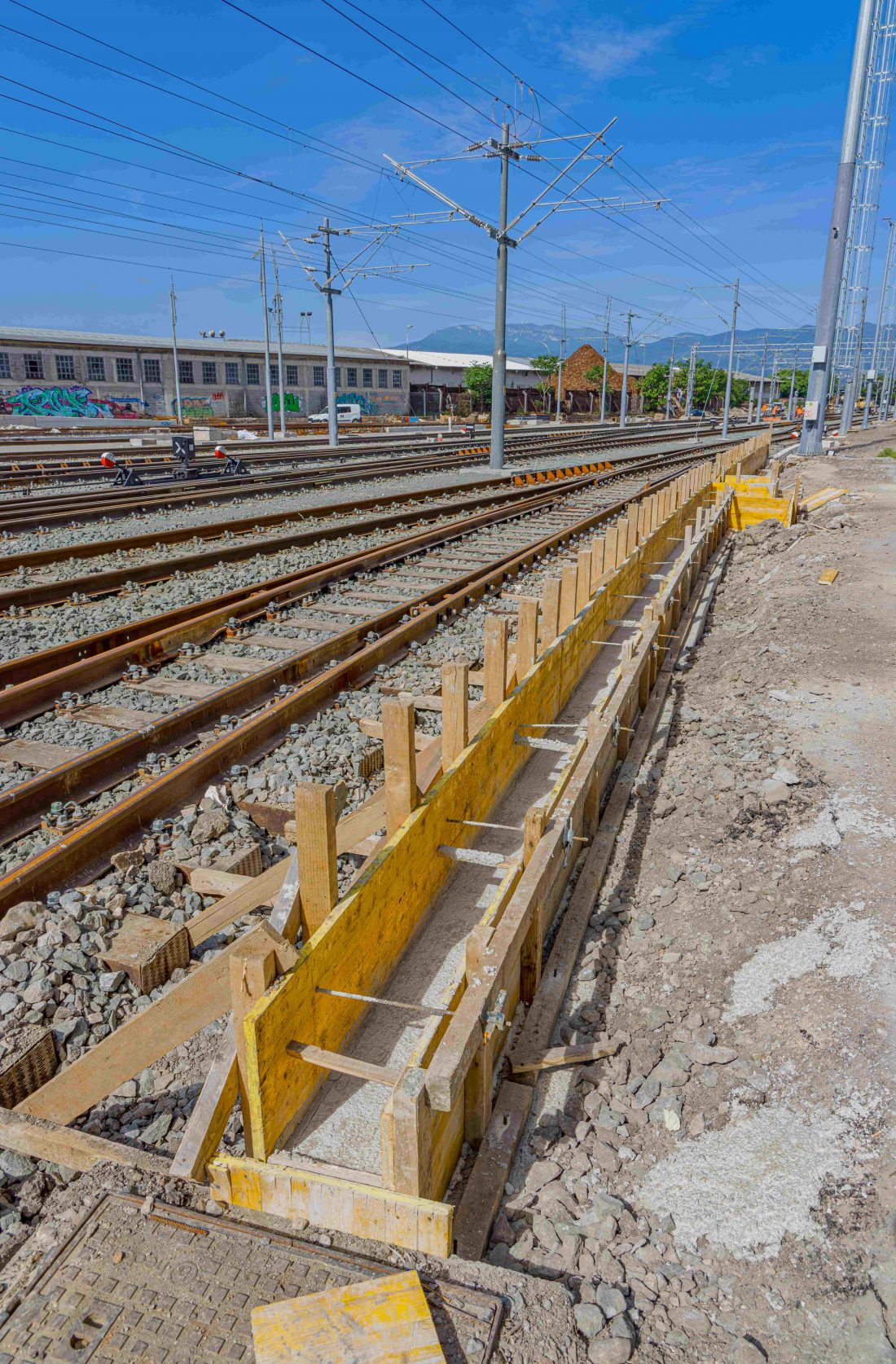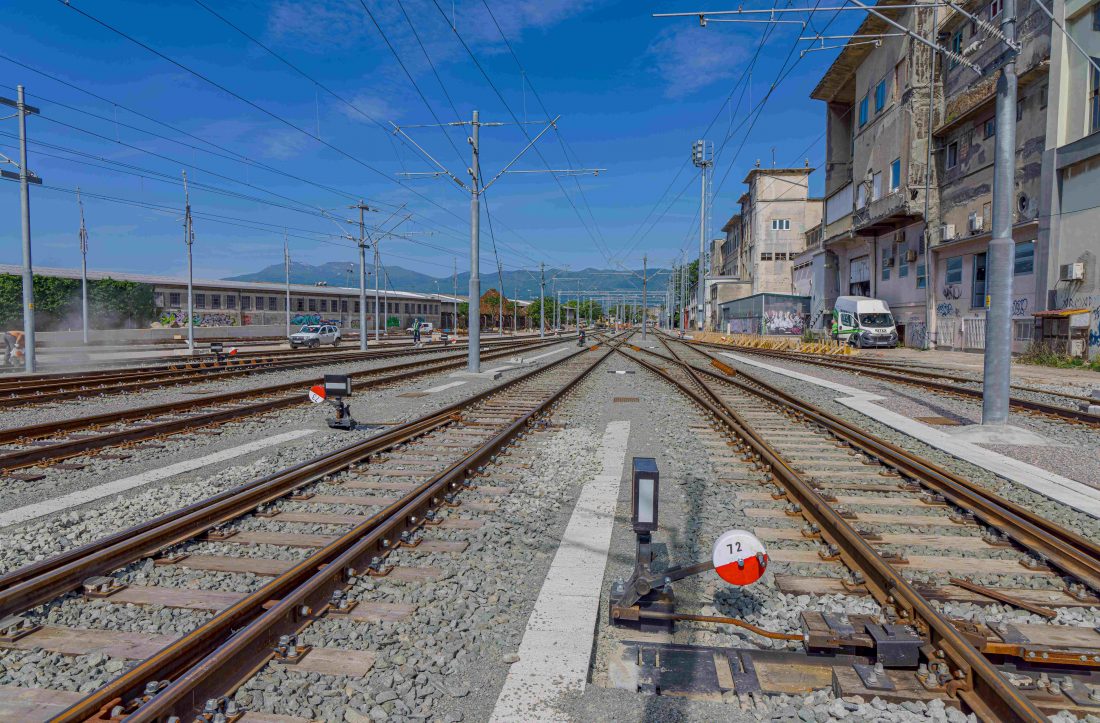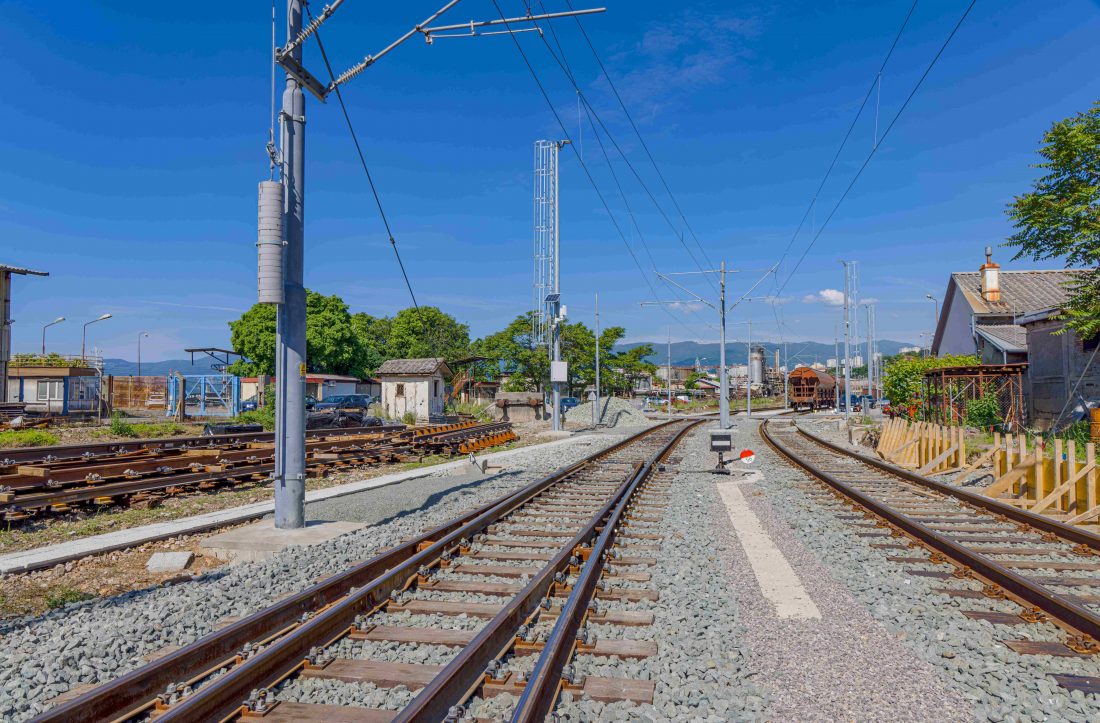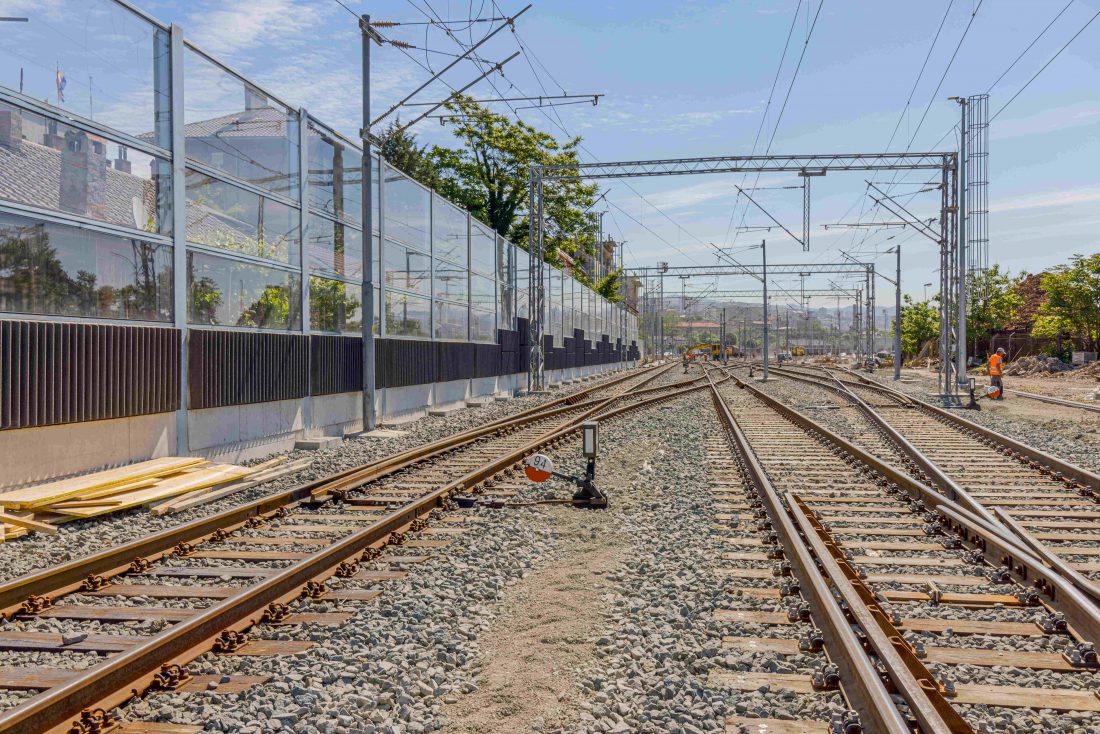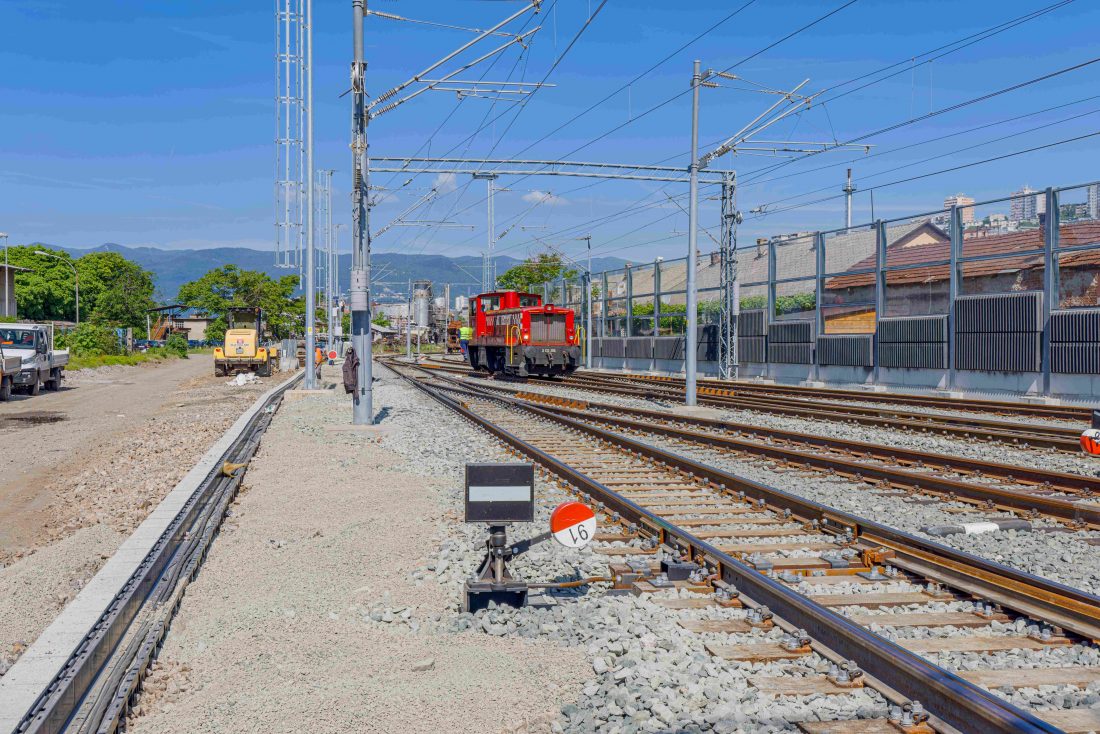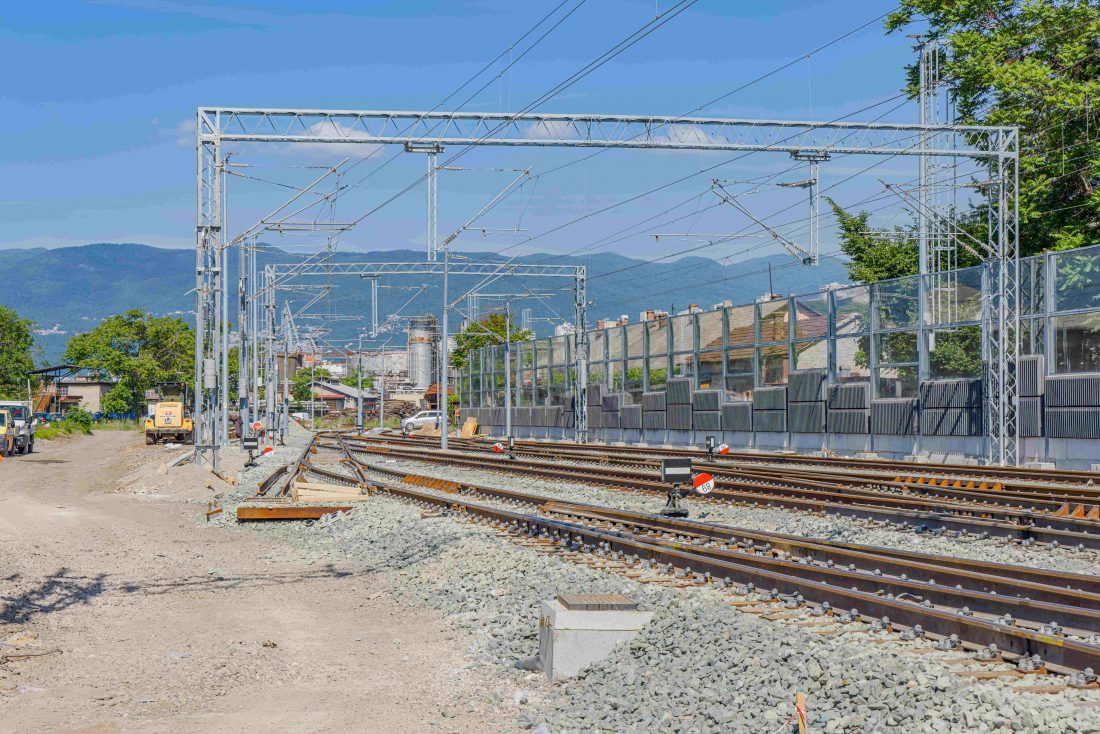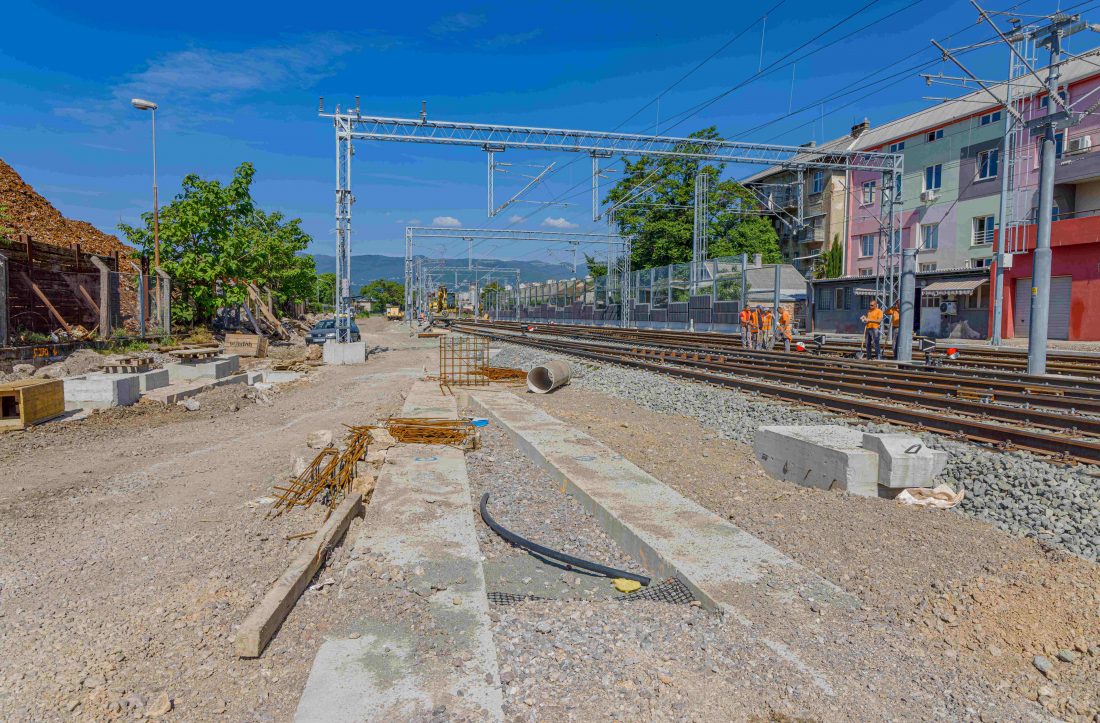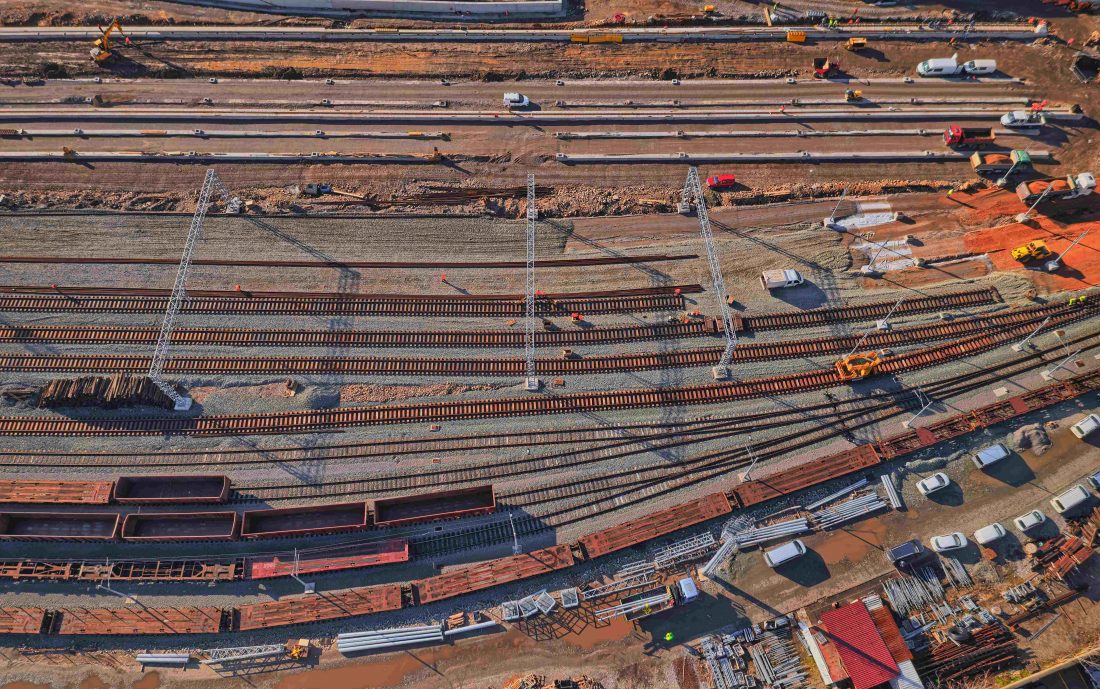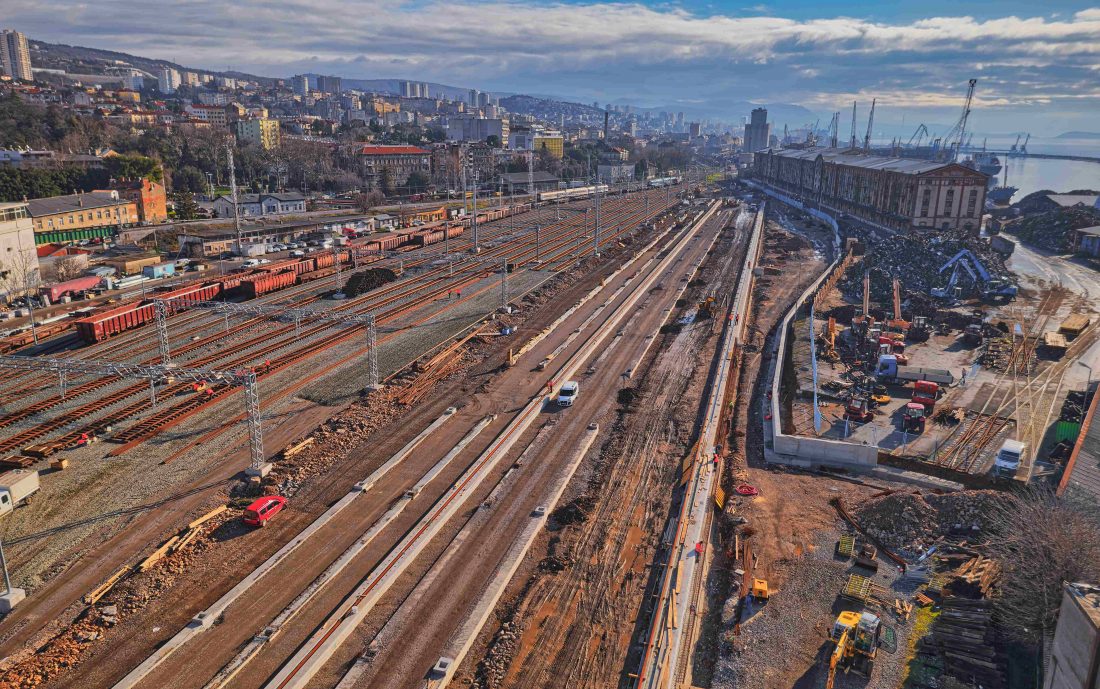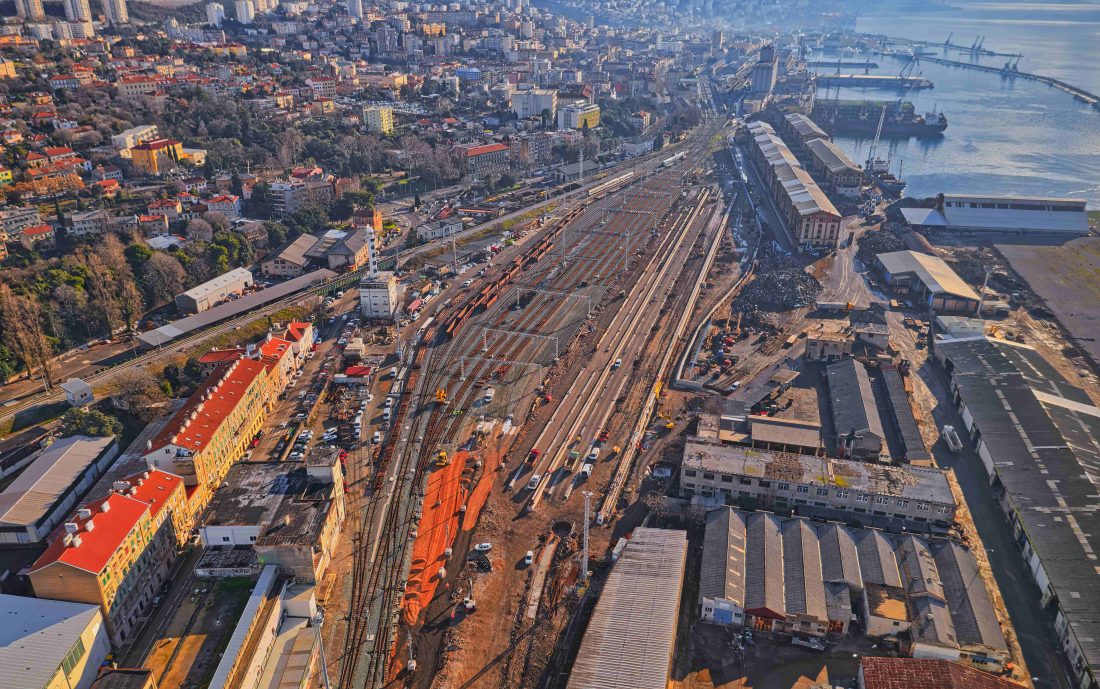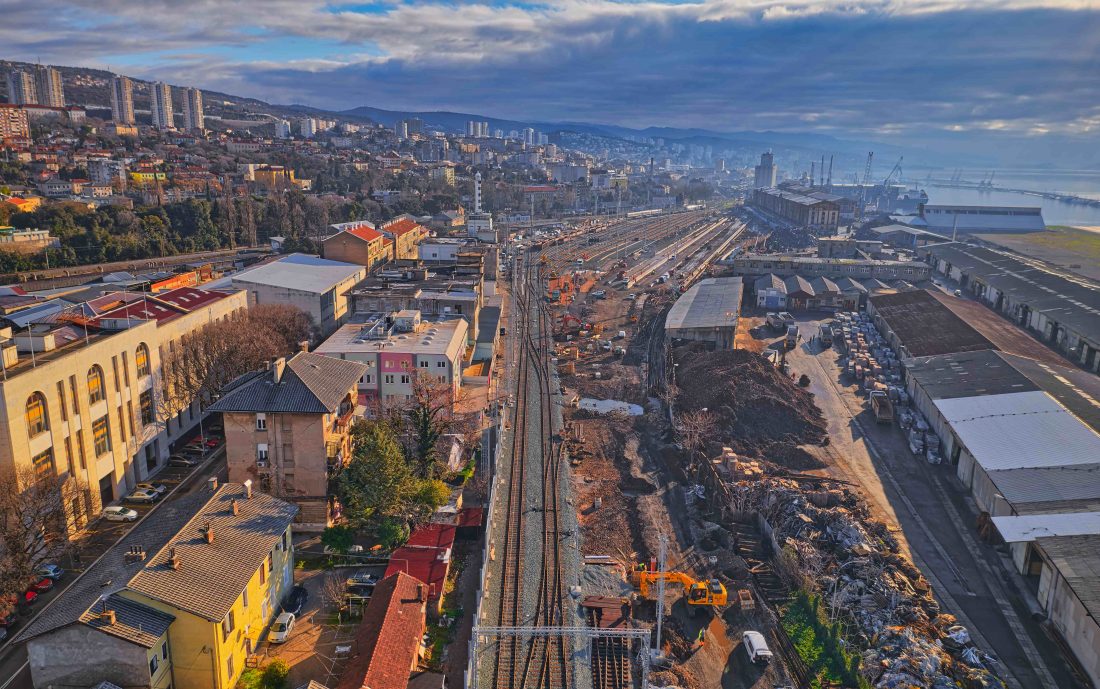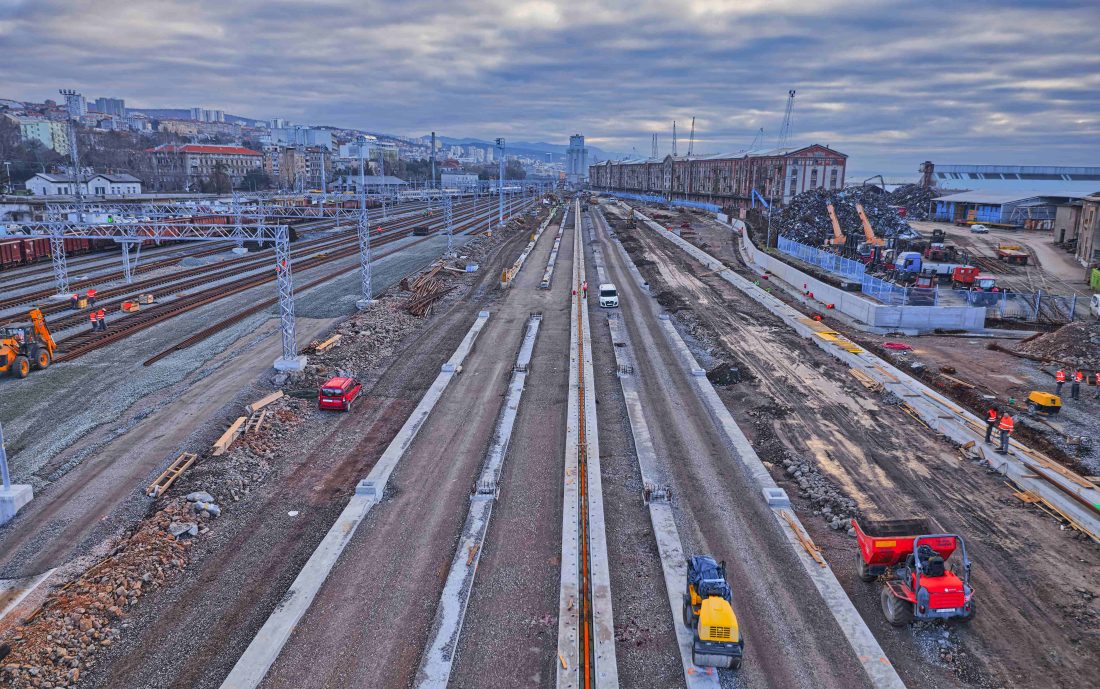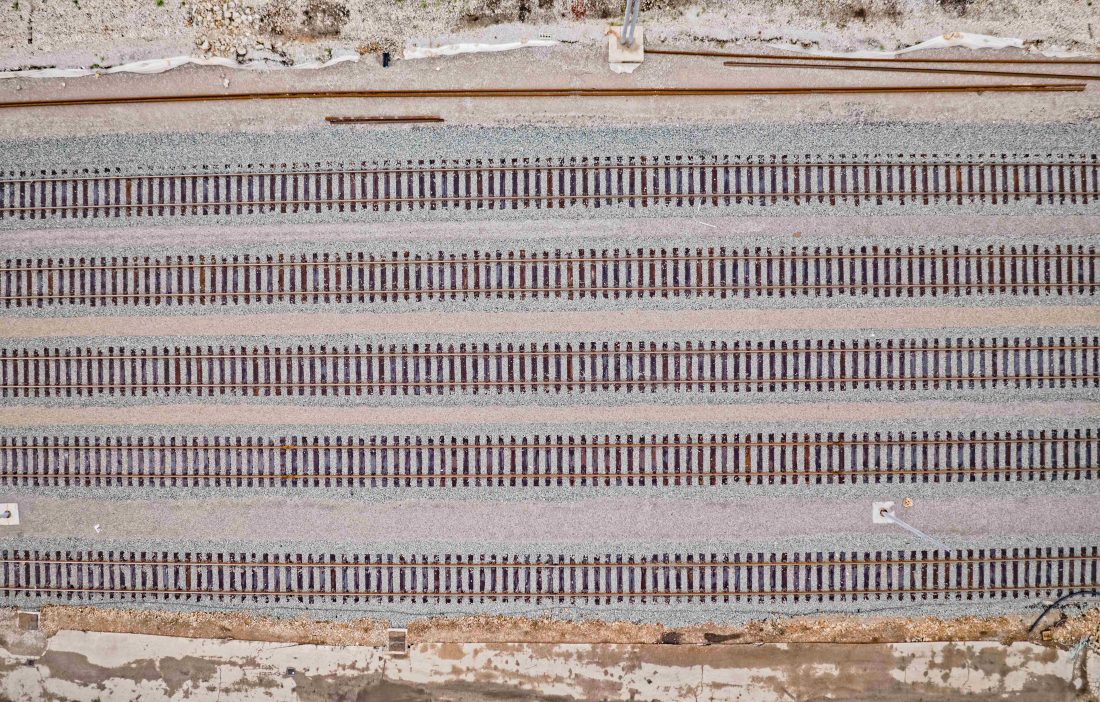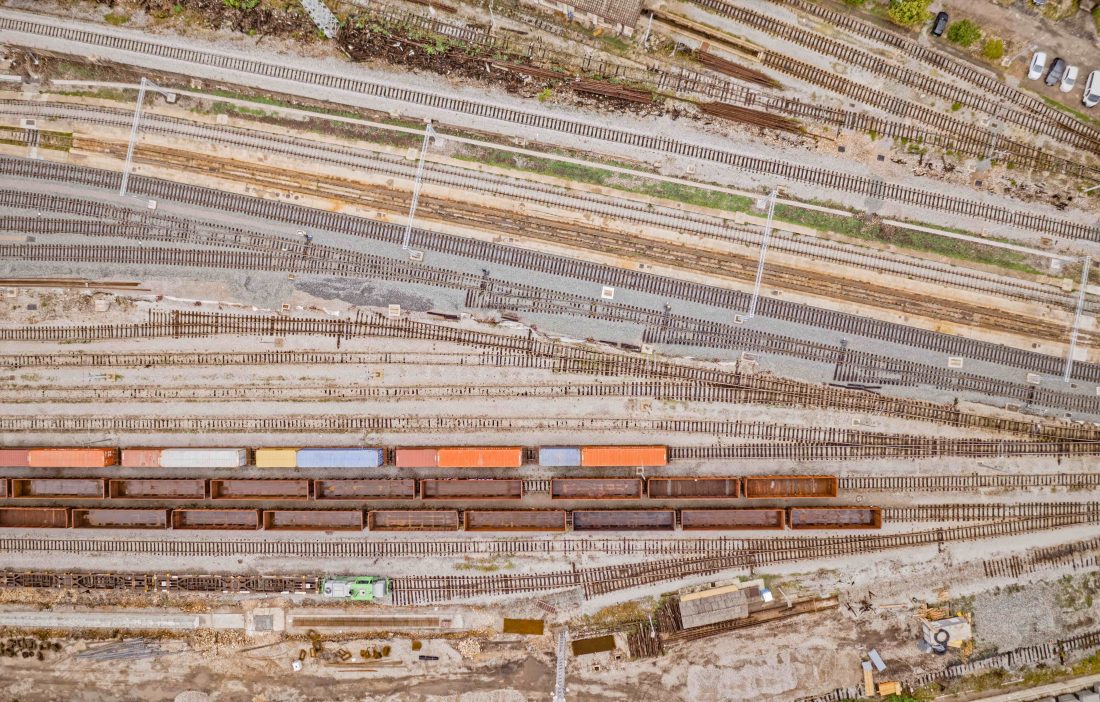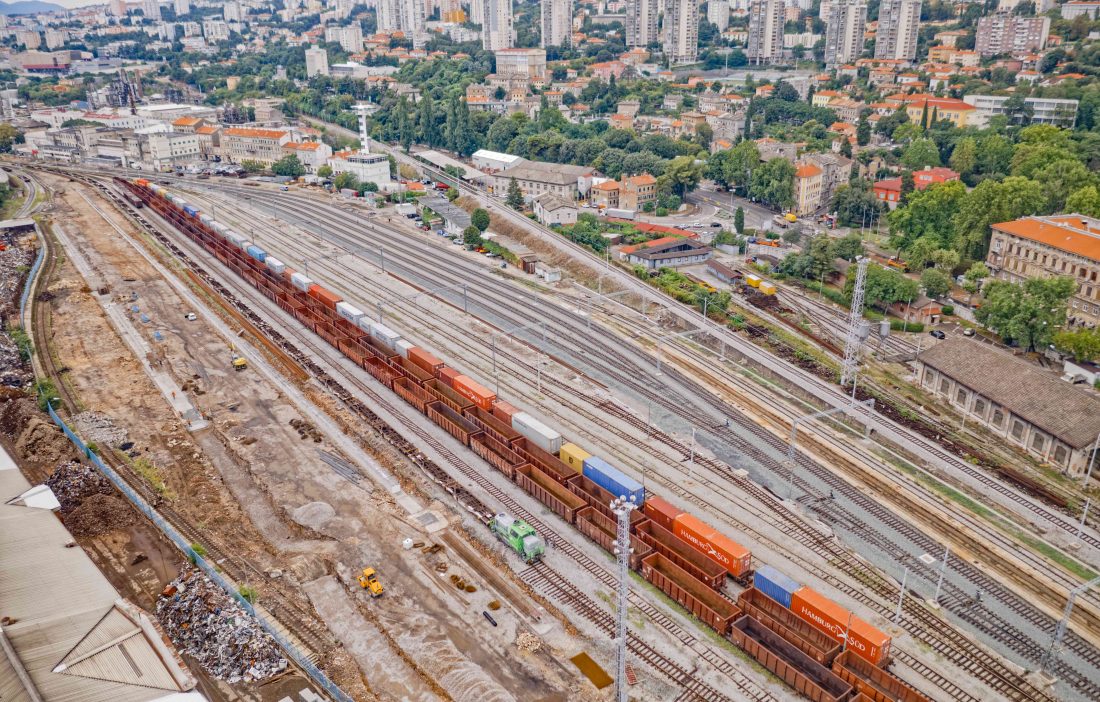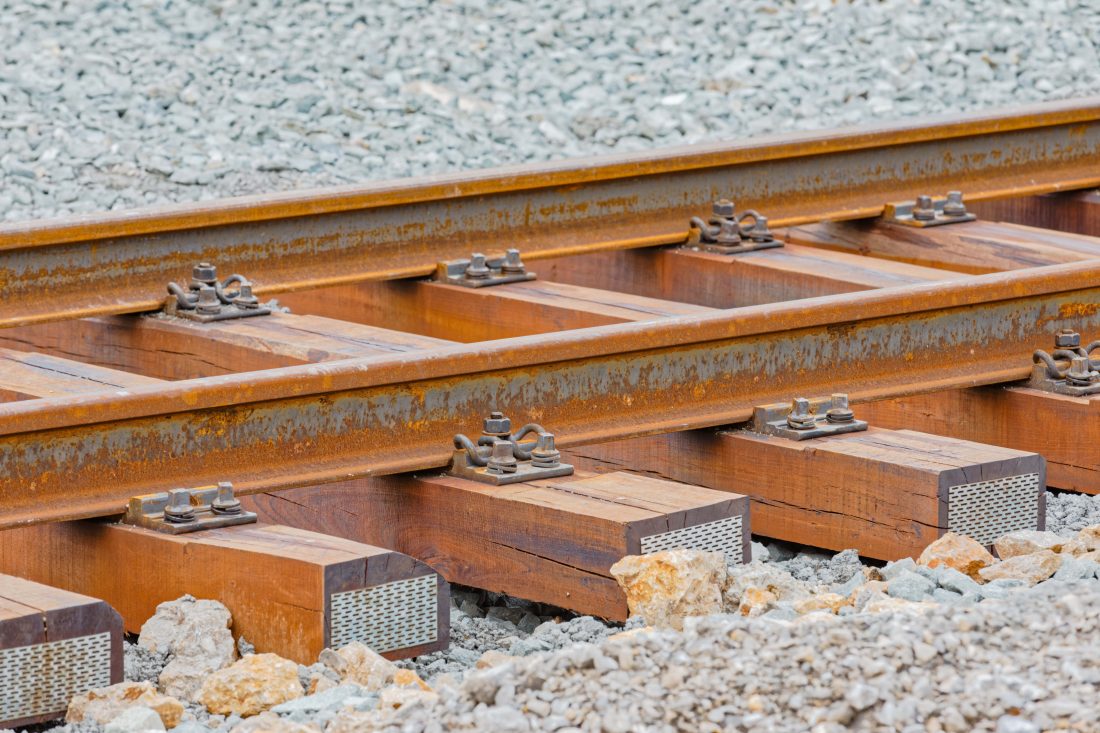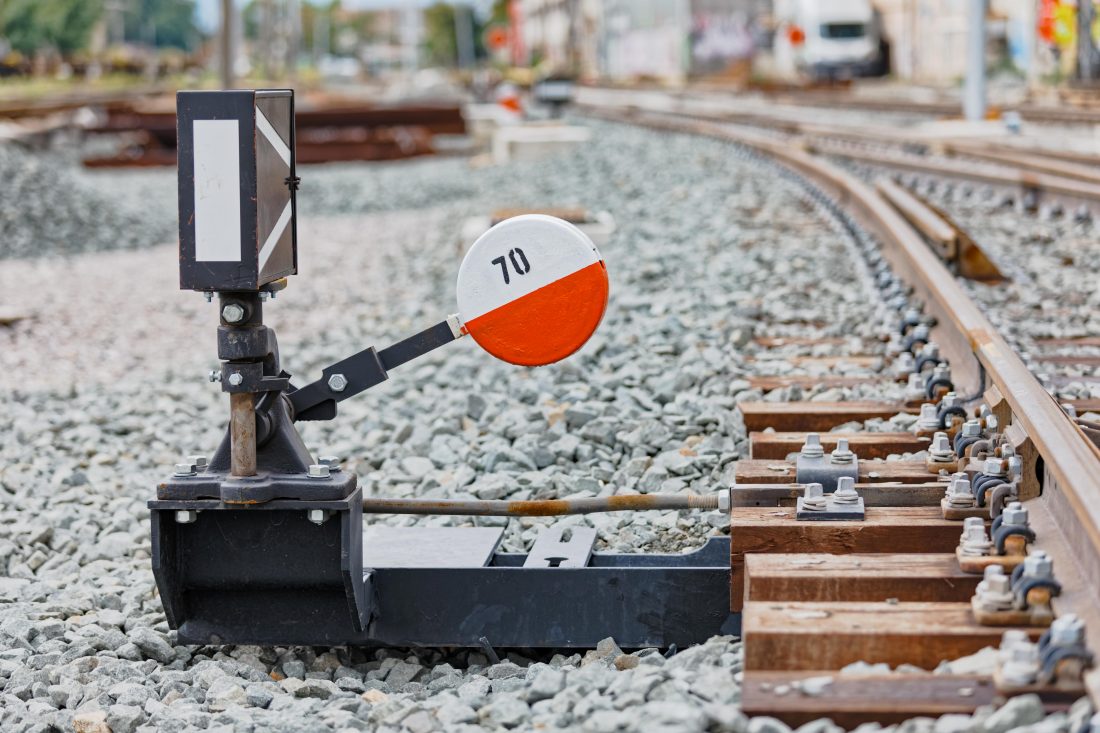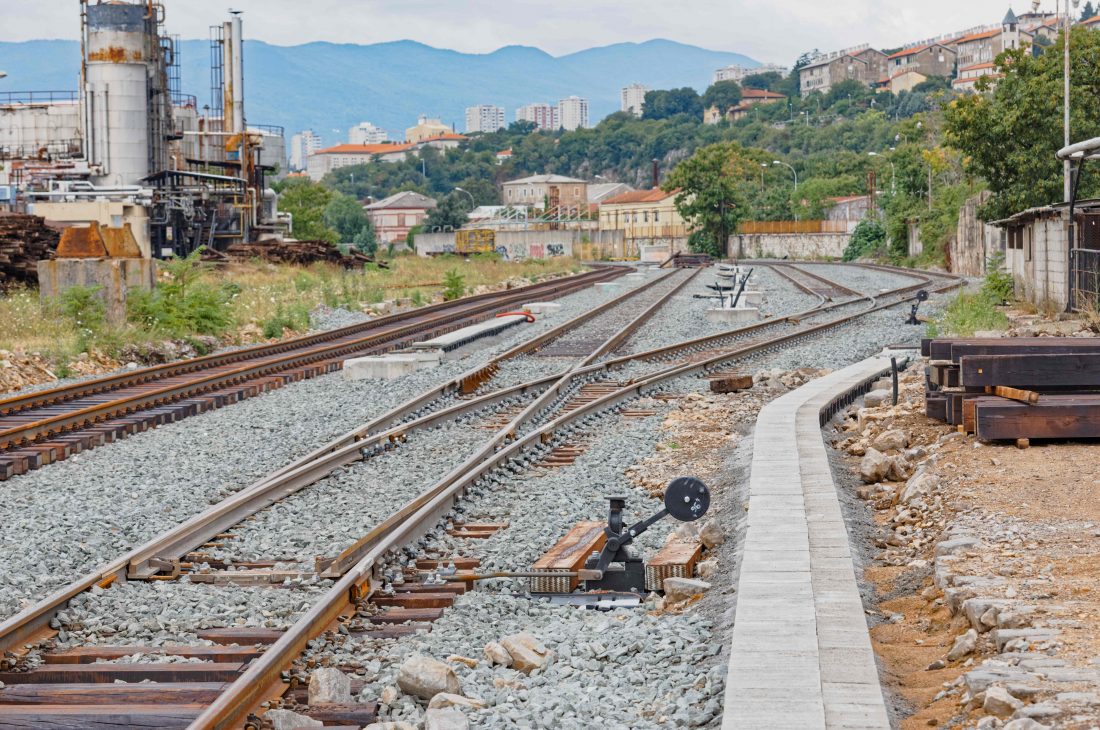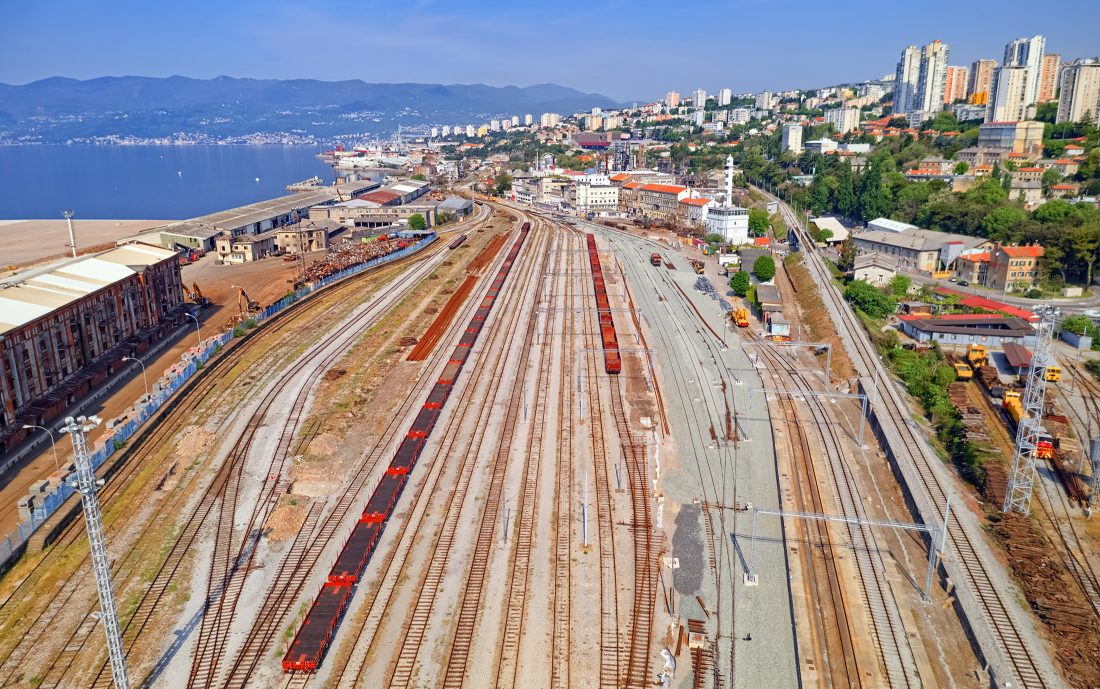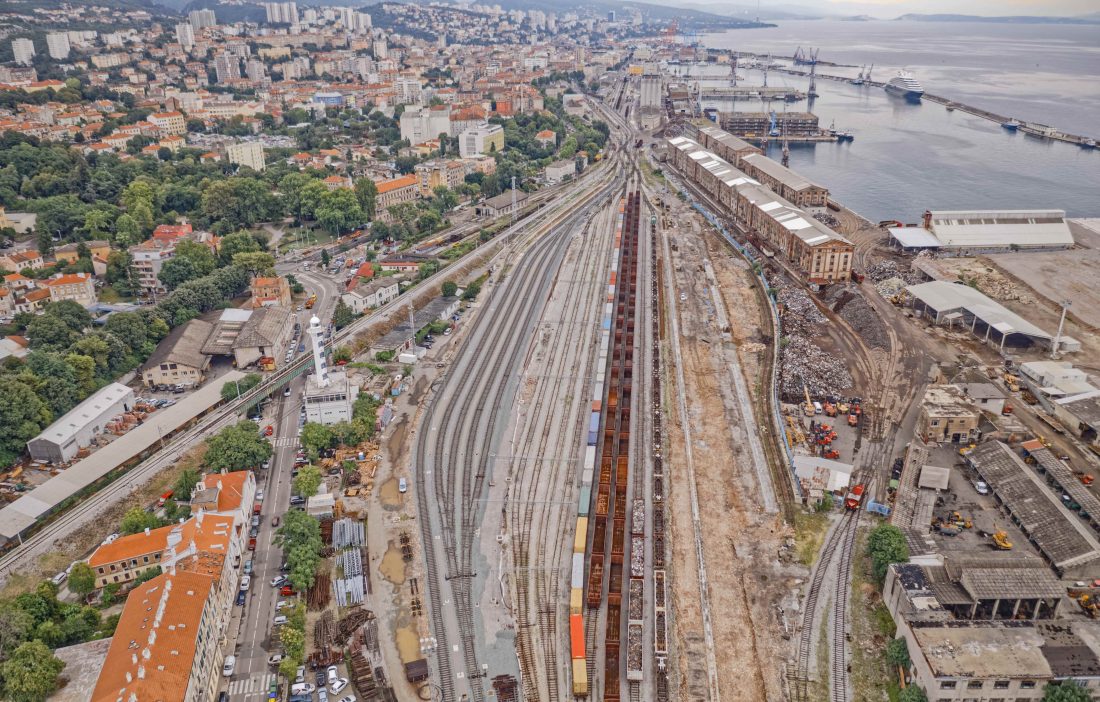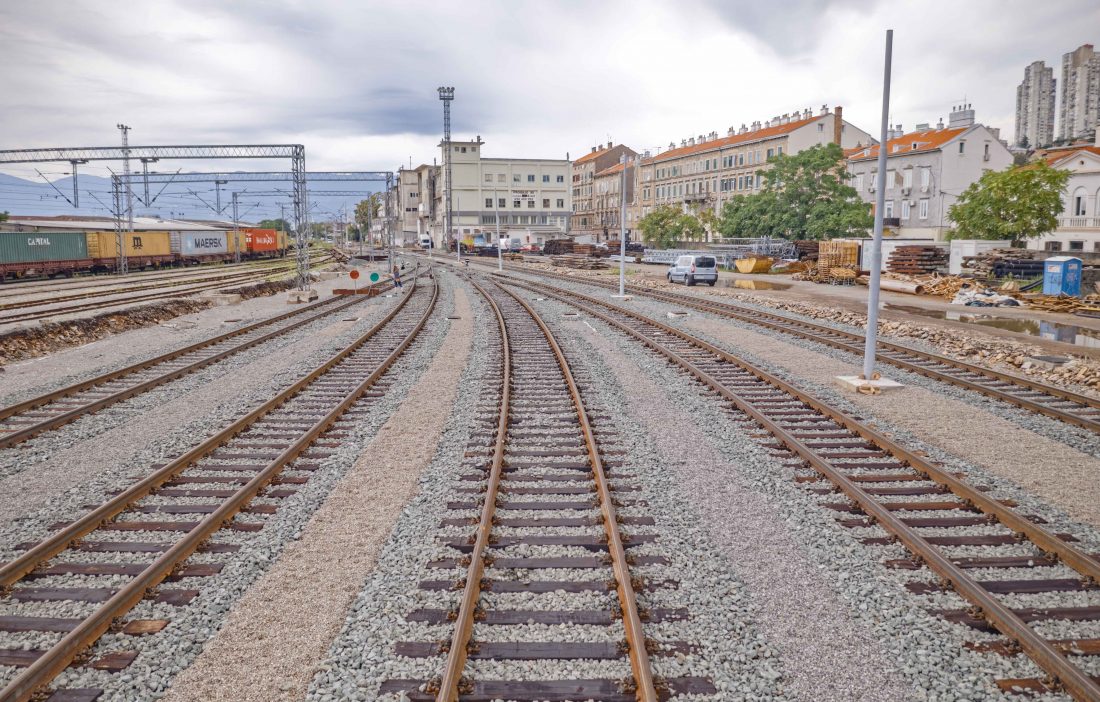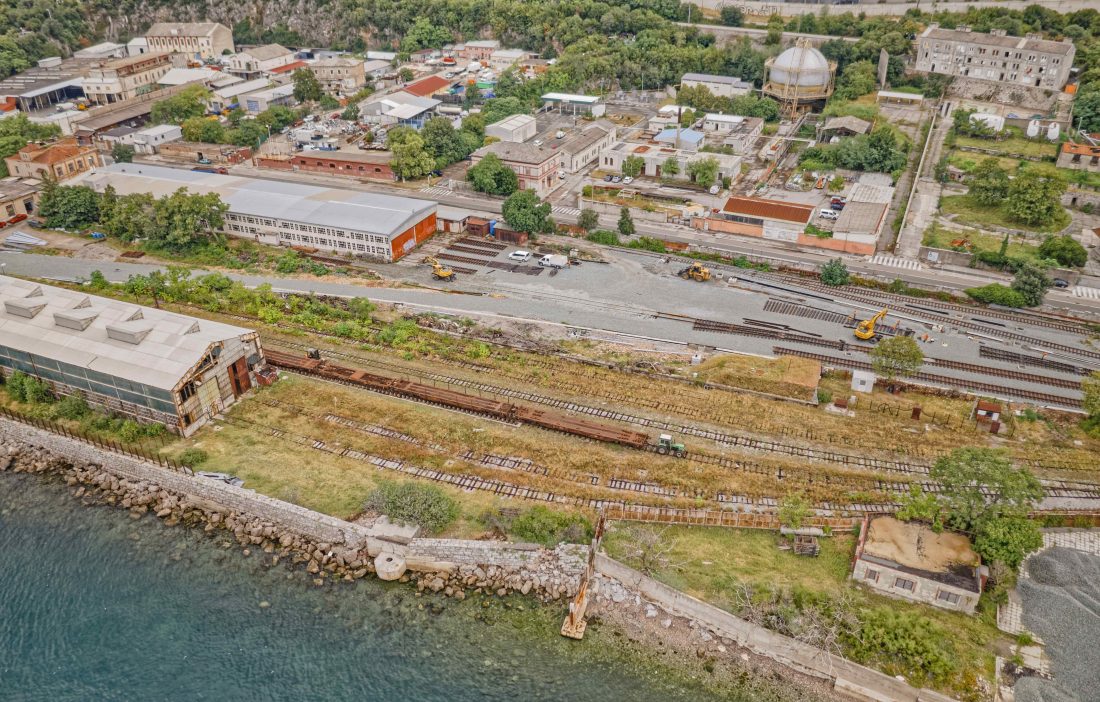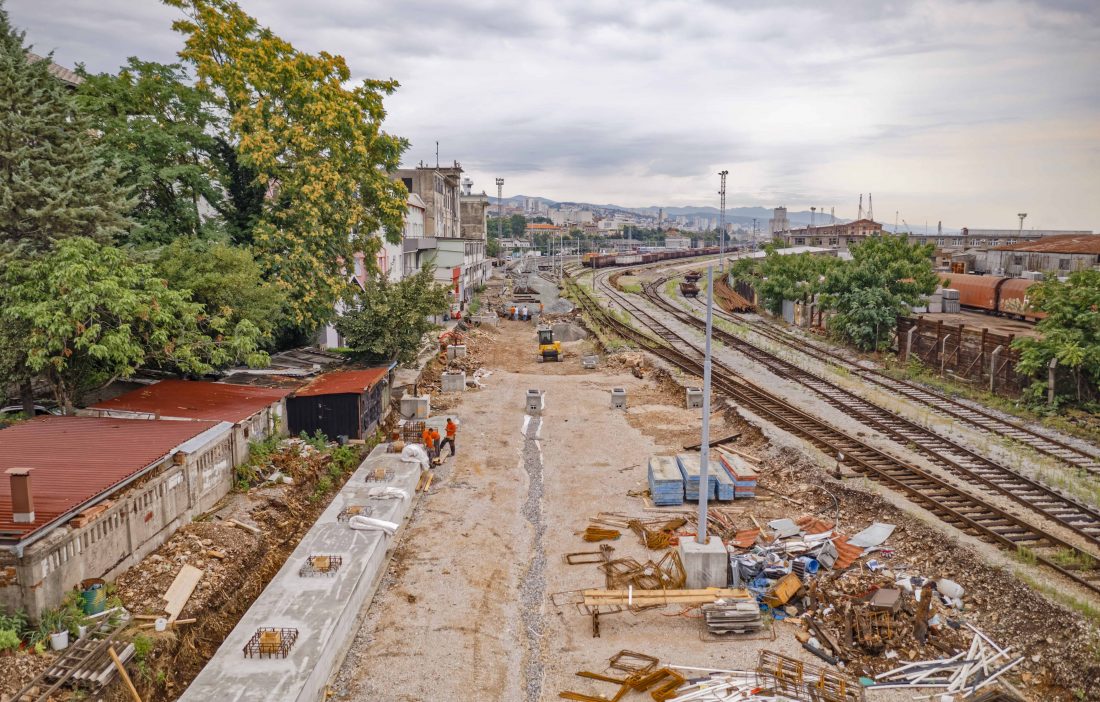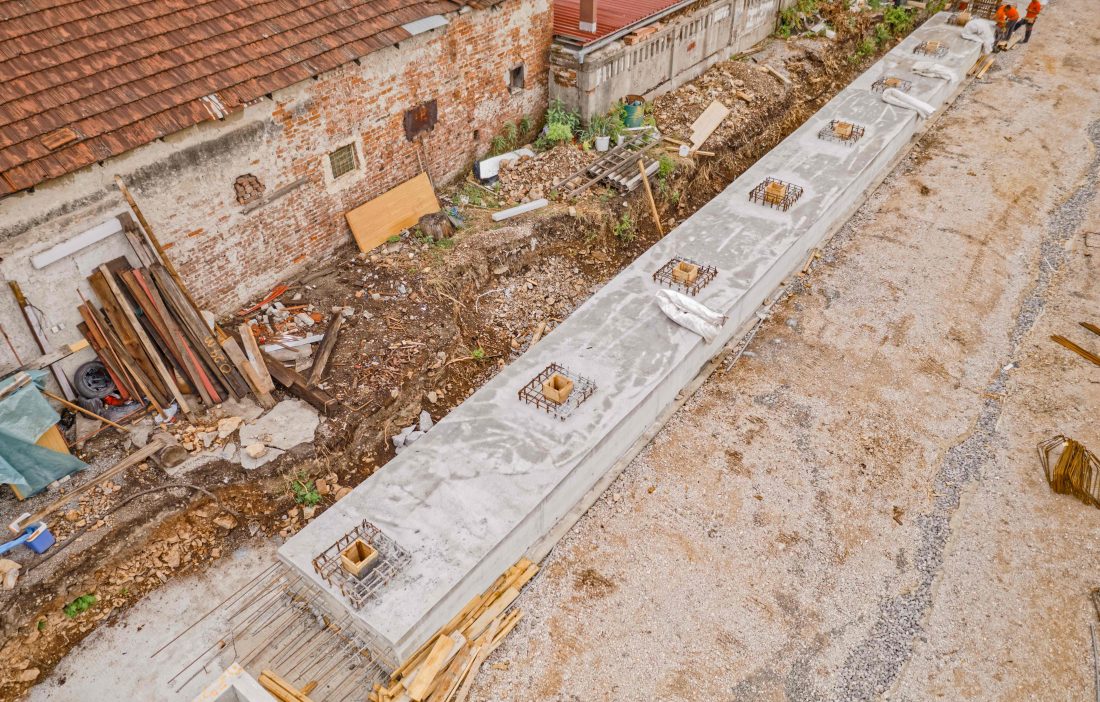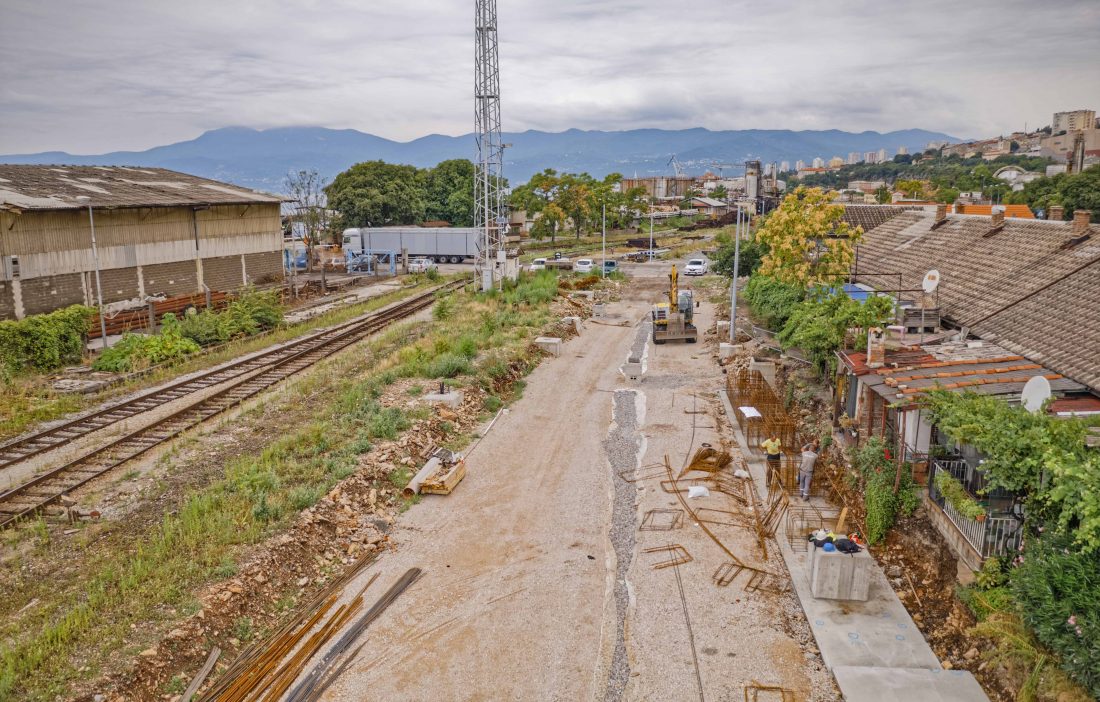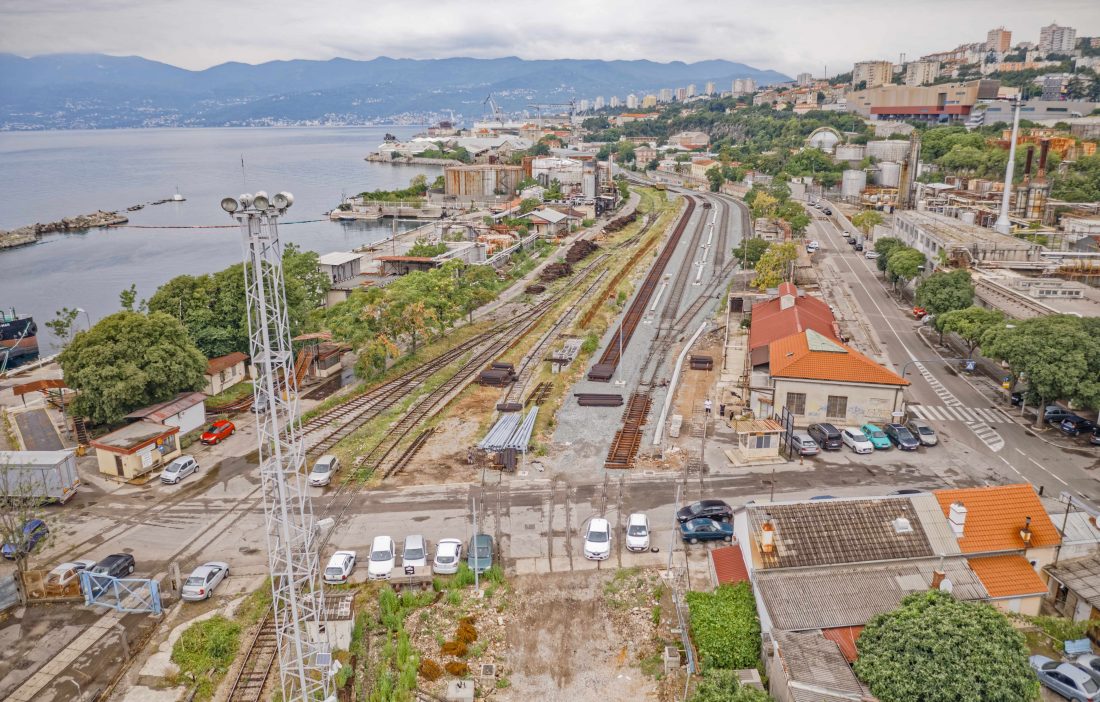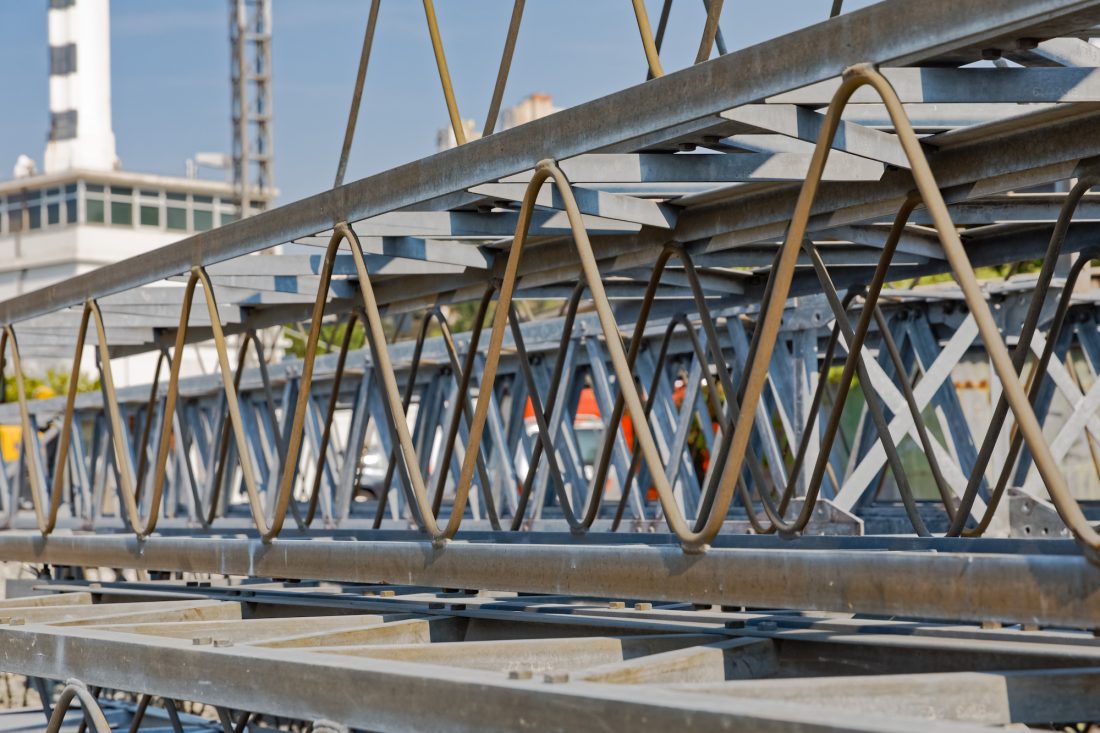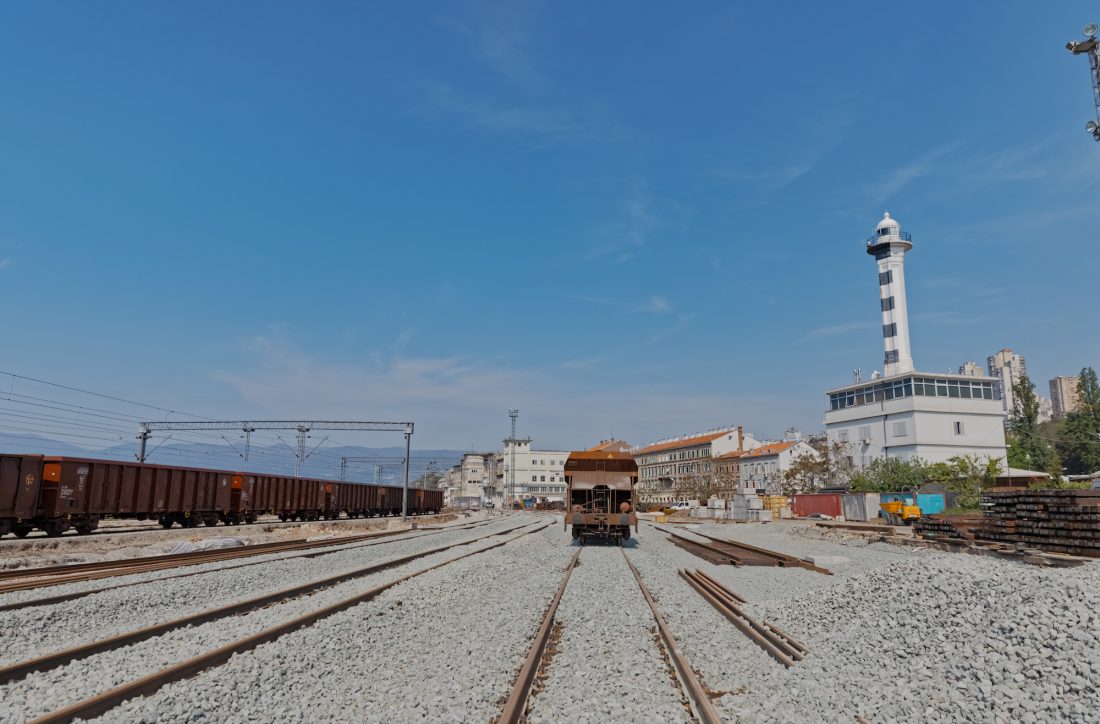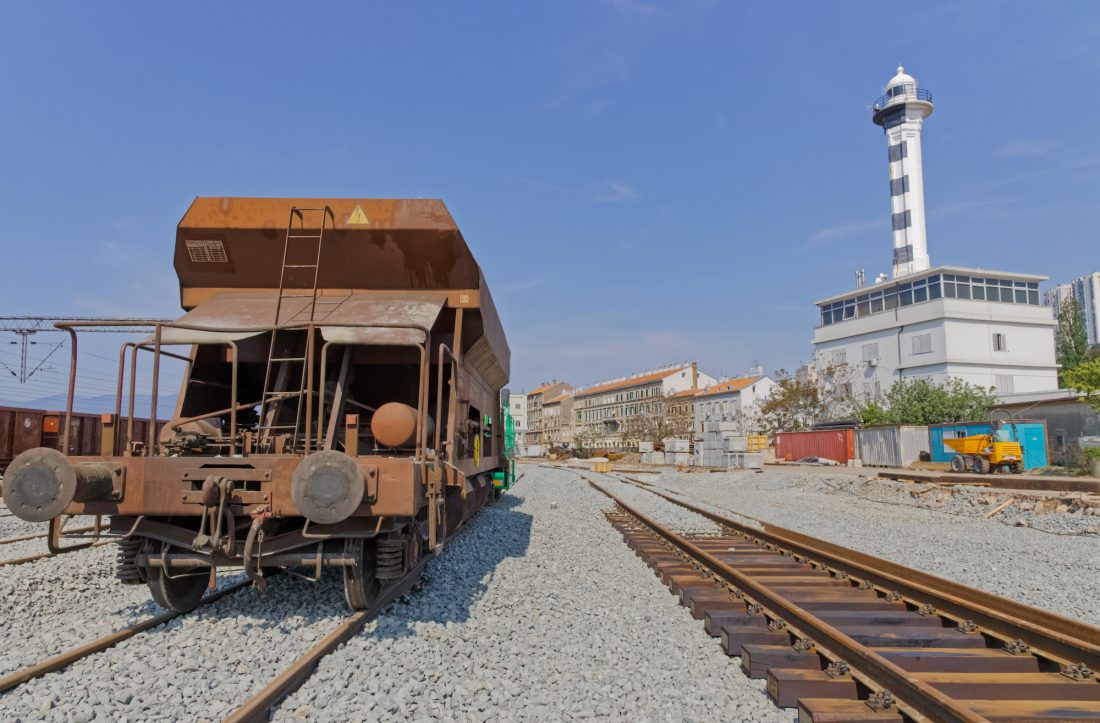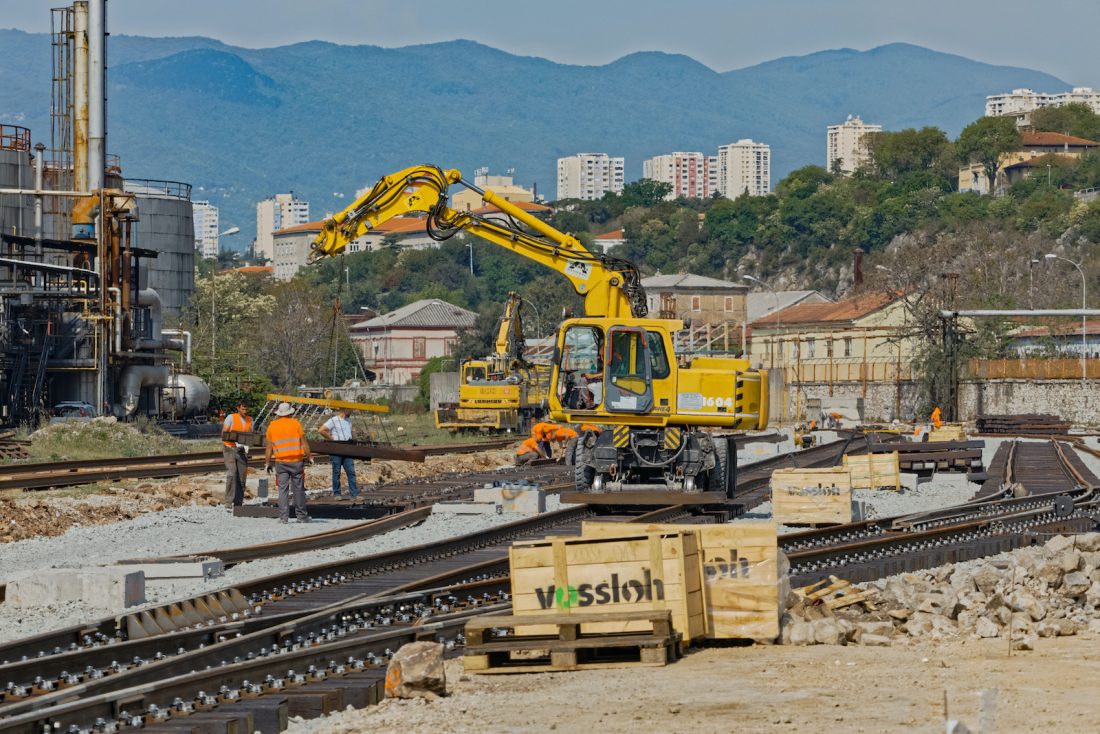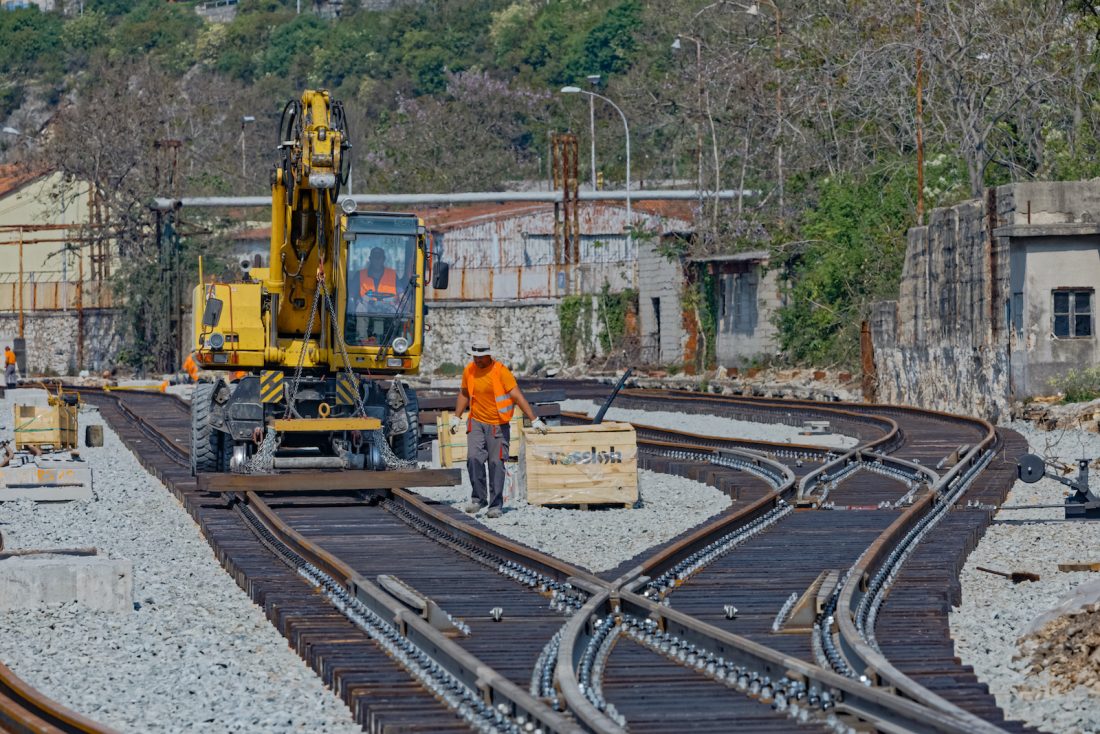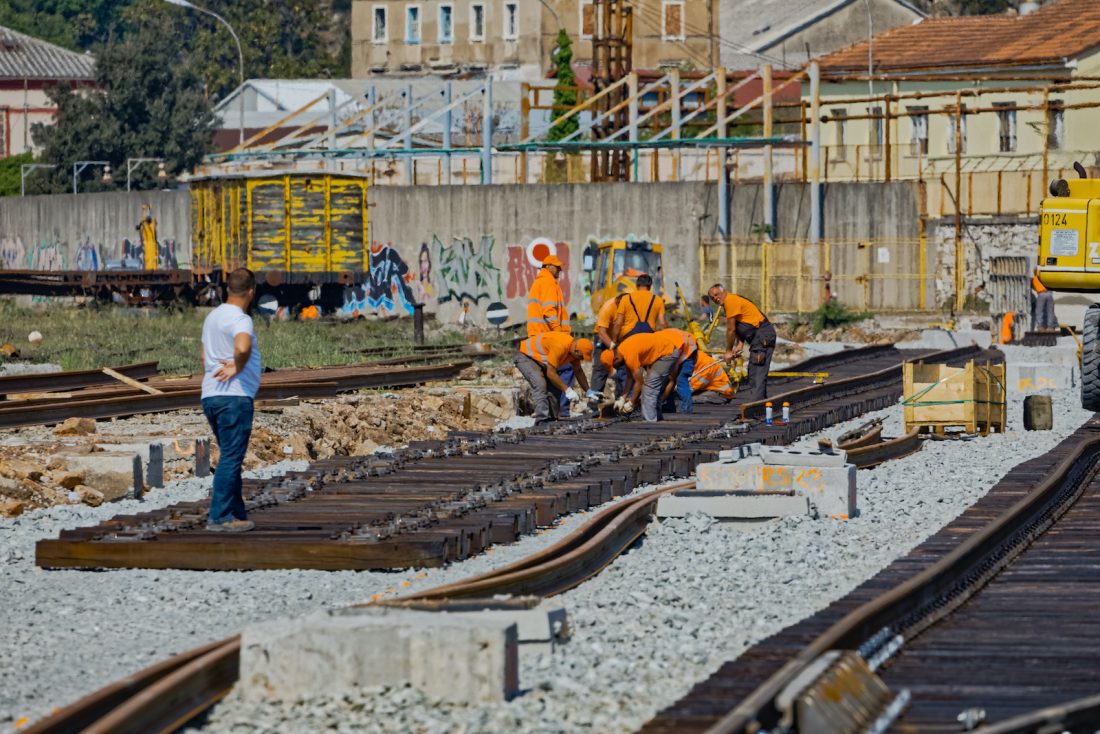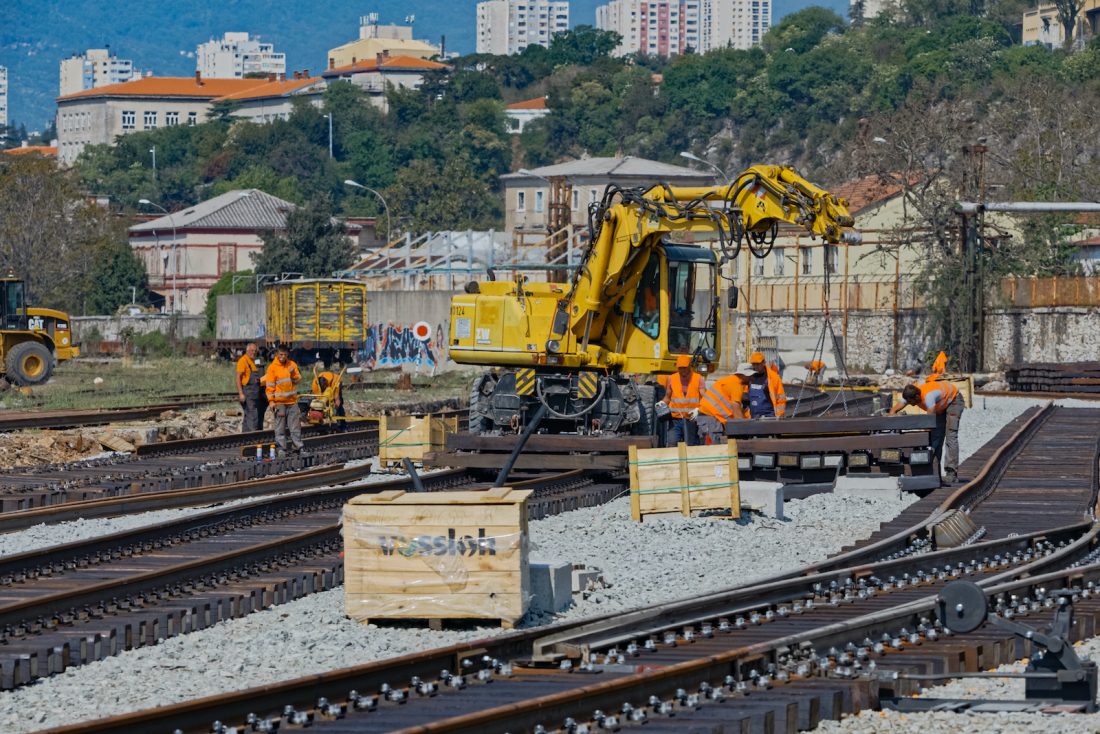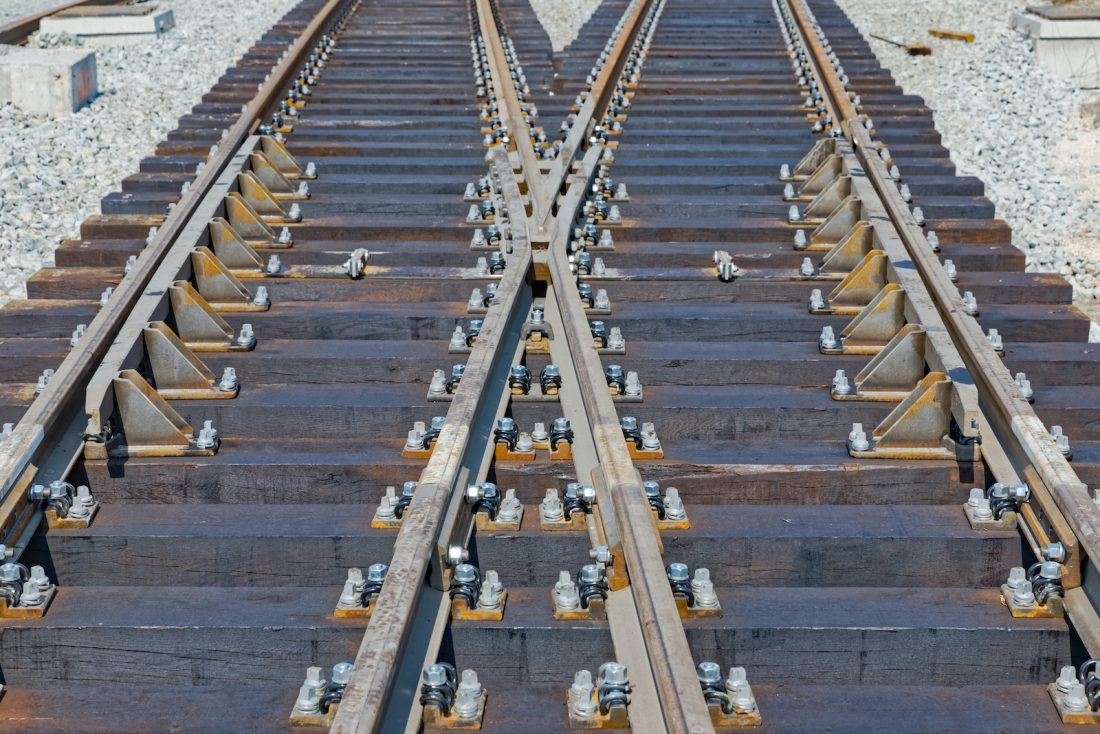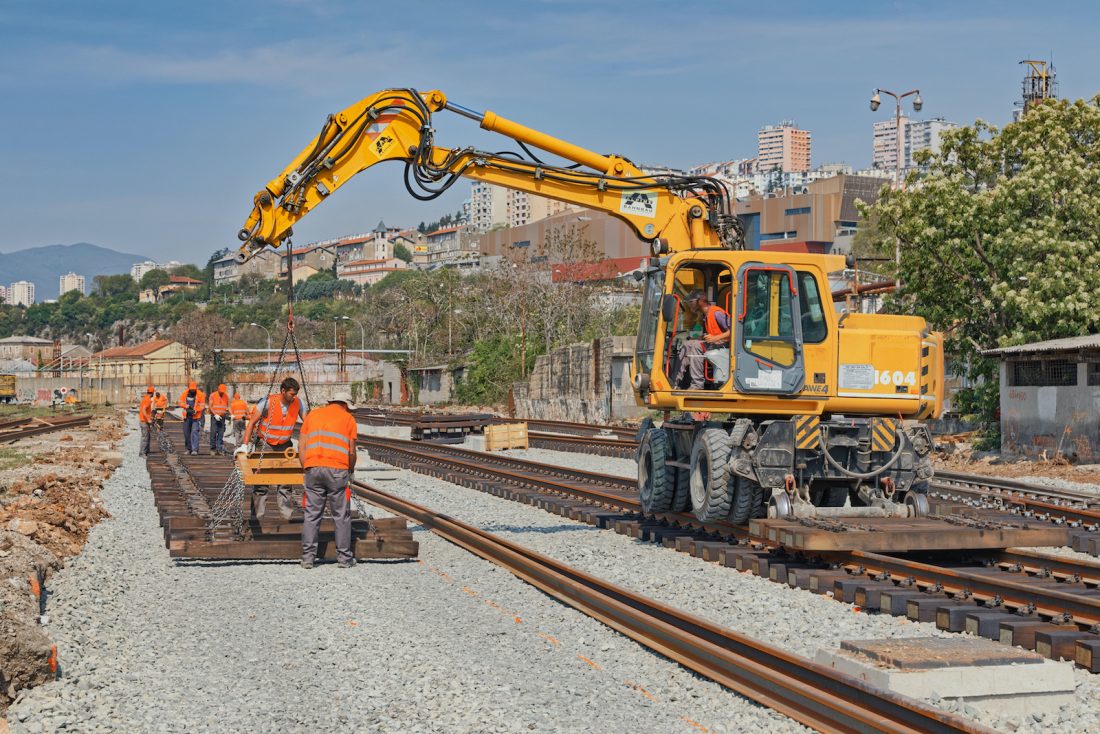Project summary
The project envisages the reconstruction of the cargo section of Rijeka railway station in order to make it complementary with the new container terminal on Zagreb Pier in the area of Rijeka port basin and to meet the requirements of longer trains.
Works on the cargo section of the railway station include the reconstruction and extension of 12 tracks and turnout tracks; construction of cable ducts; installation of telecommunication cables, feeding and lighting cables; works on the catenary and the substructure aimed to improve bearing capacity and drainage of the base. Furthermore, the project envisages the construction of a connection to track facilities and construction of cable ducts at the connection between the reconstructed tracks of Rijeka freight station and terminal to the existing condition. The project also includes construction of a new railway container terminal, along with the existing one, and construction of 4 tracks and 2 tracks for gantry cranes at the new container terminal.
This project (POR2CORE-ZCT) is a joint project of the Port of Rijeka Authority and HŽ Infrastrukture. Its objective is to contribute to the growth of the Port of Rijeka as one of the core (basic) ports on the Mediterranean Corridor by ensuring the efficiency, sustainability and multimodality of freight transport. The specific objective is to eliminate the existing bottleneck and adjust the railway infrastructure at Rijeka Station so that it can cope with the increase in transport demand in the Port of Rijeka. The reconstruction of the freight part of Rijeka railway station and construction of the terminal for railway intermodal transport to the container terminal Zagrebačko pristanište is planned in three stages:
1.Reconstruction of the freight part of the Rijeka railway station includes reconstruction and extension of 12 tracks and pull-outs, construction of cable sewerage and installation of telecommunication cables, power cables and lighting. Moreover, it also encompasses works on the catenary and works on the lower structure aimed to improve load-bearing capacity and drainage (investor HŽ Infrastruktura);
2. Construction of the connection of track facilities and construction of cable sewerage in the area of connection of the reconstructed tracks of the Rijeka freight station and the terminal to the existing condition (investor Port of Rijeka Authority);
3. Construction of four tracks, with a length of 400 m, on the new part of the container terminal at the Zagreb port and construction of two tracks for portal cranes (investor Port of Rijeka Authority).
Initial works are being carried out in the area of stage I. The works will begin with locating and marking underground installations; removing concrete and asphalt surfaces; removing tracks and dismantling switches; dismantling the overhead contact line; dismantling the catenary poles; and breaking and removing the catenary foundation. With the completion of the works and the commissioning of new parts of the terminal, the freight station will increase its loading and unloading capacity by rail to 360,000 TEU per year, which is about 60 percent of the total planned 600,000 TEU.
Objective of the project
The main objective of improving the port infrastructure is to support the growth of the port of Rijeka, which is an important part of the northern Adriatic entrance to Europe, by turning it into an efficient, sustainable and multimodal entry and exit point for freight transport.
The project is a joint project of the Port of Rijeka and HŽ Infrastrukture. Its objective is to contribute to the growth of the port of Rijeka, which is one of the core (basic) ports on the Mediterranean Corridor, by ensuring the efficiency, sustainability and multimodality of freight transport. The specific objective is to eliminate the existing bottleneck and adjust the railway infrastructure at Rijeka Station so that it can cope with the increase in transport demand in the Port of Rijeka. With the completion of works and the commissioning of new parts of the terminal, the freight station will increase its loading and unloading capacity by rail to 360,000 TEU per year, which is about 60 percent of the total planned 600,000 TEU.




